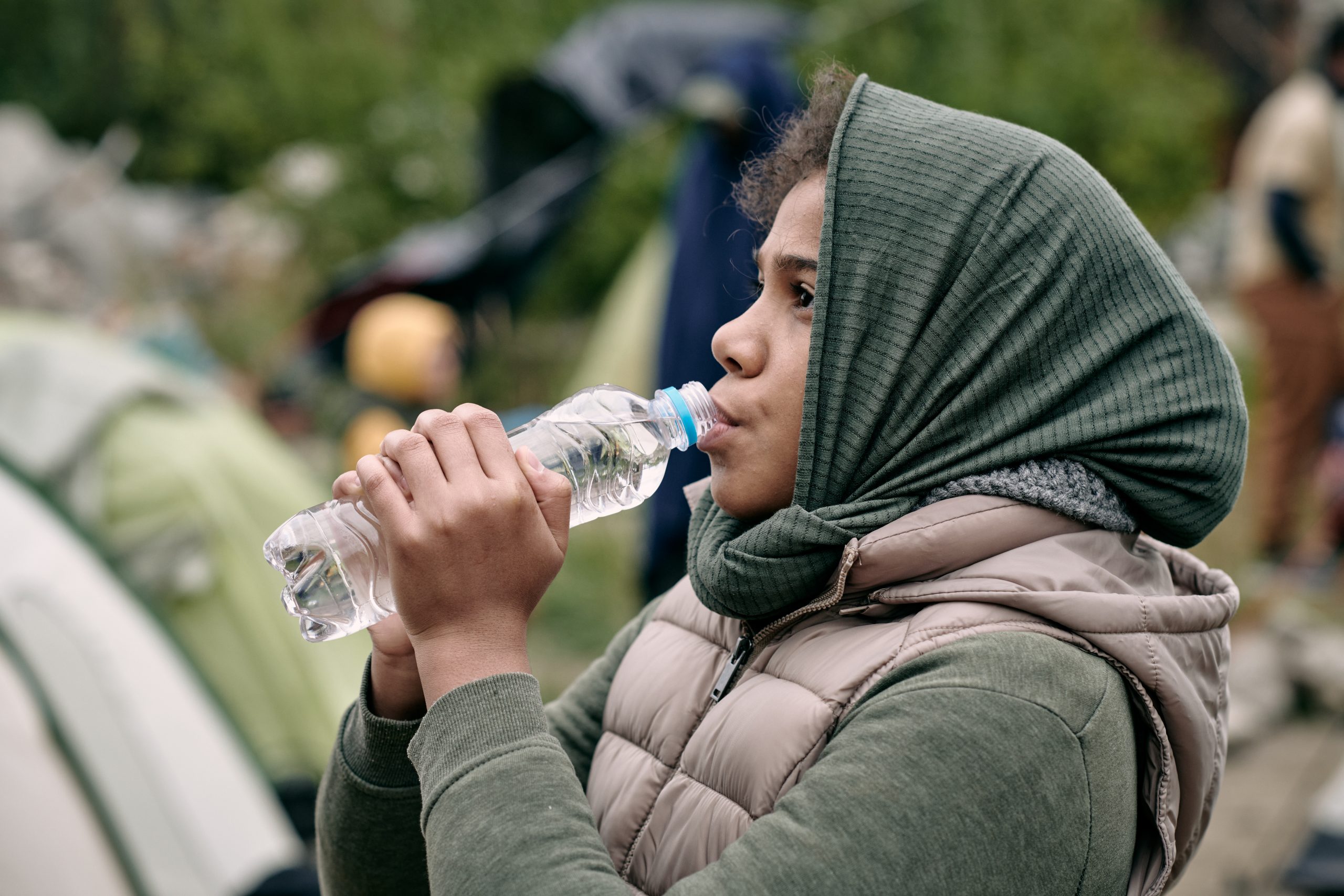BANK
NIGERIA – The value of naira collapses again

With a drop of nearly 40% in just one week, following the government’s decision to no longer artificially support its price, the currency of Nigeria, Africa’s leading oil producer, but also has the second lowest life expectancy in the world, and is now 1,148 times lower than when it was created in 1973 against the US dollar. The integration of such a fragile economy into a West African monetary zone would therefore be very detrimental to the economies of all the countries in the region, including Anglophones.
2023 is the 50th anniversary of the naira, created on January 1, 1973. But while it was worth $1.52 at its beginnings (a dollar trading for 0.66 naira, or more precisely 0.657895), and its value strengthened even in its early years, until reaching nearly $1.85 in January 1980, the naira then experienced an uninterrupted succession of depreciations and devaluations, to the point that the value of the US dollar reached the level of 750.50 nairas on Wednesday, June 21. Thus, the Nigerian currency lost 99.91% of its value in just 50 years, which means, in other words, that it was divided by 1,148. While the 700 mark had been crossed on February 2, the recent government decision not to maintain its price artificially, since June 14 and for lack of sufficient foreign reserves, The value of the national currency, which lost 38.4% in a single week, fell again sharply, crossing the symbolic threshold of the division by a mile on 19 June 2023, according to the Centre d’étude et de réflexion sur le monde francophone (CERMF).
By way of comparison, the source indicates that the price of the Moroccan dirham has only been divided by a little more than two in the last fifty years against the dollar, while that of the CFA franc has been divided by about two and a half, the Tunisian dinar by nearly seven, and the South African rand by 23.
Nigeria’s poor economic and social indicators
CERMF argues that the continuing collapse of the naira only reflects the serious economic difficulties of the country, which has suffered for many years from poor governance, a high level of corruption and embezzlement, and a lack of diversification. And although Nigeria has been Africa’s largest oil producer for several decades, the country has still not succeeded in diversifying its economy, which still relies more than 90% of its exports on hydrocarbons. In the absence of having developed other significant sources of income, and of having created an environment favourable to investment and business, the country remains very dependent on the development of the price of hydrocarbons, as well as its production in this field (which is actually in continuous decline).
Nigeria’s poor economic performance is particularly evident in terms of economic growth. Indeed, over the last decade 2013-2022, the country recorded only an annual growth rate of 2.3% on average, a new rate that is even lower than its population growth (2.5%). At the same time, Côte d’Ivoire and Ghana had annual growth rates of 7.0% and 4.6%, respectively, while Senegal and Cameroon had annual growth rates of 5.2% and 4.0%, the text notes.
As a result, Nigeria’s decline has naturally had an impact on GDP per capita, which in early 2022 was only $2,066 (according to the latest World Bank data). The latter has recently been overtaken by those in Côte d’Ivoire (US$2,549) and Ghana (US$2,363), and should soon be overtaken by those in Senegal and Cameroon. Côte d’Ivoire’s performance is particularly remarkable, given that the country, which has become the richest in continental West Africa, has produced between 40 and 60 times less oil in recent years than Nigeria (and even six times less oil than Ghana, and three to four times less gold).
Finally, the economic situation in Nigeria is not without consequences for the standard of living of the population. For example, inflation has been fairly high for many years, averaging 12.3% per year over the 2012-2021 decade, according to the latest World Bank data. A level equivalent to that of Ghana (12.0%), but very much above those of Côte d’Ivoire (1.3%), Cameroon (1.9%), or Senegal (0.8%). Inflation is expected to remain high this year, particularly with the recent tripling of gasoline prices following the total elimination of government subsidies.
A radical measure which can be explained precisely by the particularly delicate financial situation of Nigeria, as evidenced by, among other things, the critical level of foreign exchange reserves of this great oil country, which is no longer able to honour its commitments towardsto foreign airlines, by preventing them from repatriating their income. The situation is so serious that Nigeria is even far ahead of the world in this area, with $812 million in funds frozen at the beginning of May 2023, which is more than a third of the total amounts withheld worldwide. (which in particular led to the temporary suspension of some Emirates flights in 2022).
Moreover, the CERMF notes that Nigeria, despite huge oil revenues accumulated since its independence (including hundreds of billions of dollars over the last two decades alone), has the second lowest level of life expectancy in the world, estimated at 52.7 years in 2021, again based on the latest World Bank data. The country even finished last in 2018 and 2019, before overtaking Chad again (52.5 years). Similarly, Nigeria has the fourth highest infant mortality rate in the world, with no less than 70.7 deaths per 1,000 live births, just after Somalia. Finally, it should also be noted that the country has achieved very poor electrification performance, with an electricity access rate of only 55.4% of the population at the end of 2020 (against, for example, 70.4% for Senegal, 64.7% for Cameroon, and more than 99% for each of the three Maghreb countries).
The consequences of Nigeria’s integration into a West African monetary zone
The integration of an economy as bad as that of Nigeria into a West African monetary zone can therefore only have very harmful consequences on the economies of all the countries of the region, given that Nigeria’s constant decline, combined with its demographic weight, would pull down all other countries, be they French-speaking, English-speaking or Portuguese-speaking. A problem that would not arise as much with the integration of other crisis countries such as Ghana, whose severe economic difficulties are absorbable, given the country’s “reasonable” demographic weight relative to its neighbours.
Thus, until Nigeria resolves its heavy structural problems, the country’s accession to a West African currency is likely to profoundly destabilize the economies of all the other countries sharing that same currency, through a significant loss of value, accompanied, moreover, by a monetary policy more adapted to a country in crisis, and not corresponding to the needs of the dynamic countries of the region (Nigeria, because of its demographic and therefore economic weight, probably largely dictating this policy). The WAEMU countries, which are well ahead in fiscal discipline and good governance over other countries in the region, are the most dynamic area in West Africa and the continent’s largest high-growth area, This would see their growth fall significantly, while at the same time seeing their inflation level rise sharply.
The source further notes that Nigeria’s economic decline is likely, in the long term, to significantly increase the emigration of Nigerians in search of a better life to countries in West and Central Africa, and in particular to Côte d’Ivoire, Ghana, Benin, Cameroon, Gabon and Senegal. And given the population of Nigeria, these countries will then have to face what could be a real migratory shock, especially those of West Africa, where ECOWAS rules provide for freedom of movement and residence for nationals of member countries.
BANK
SENEGAL – 511.3 billion CFA francs in savings and 677 billion CFA francs in loans granted in 2022 in microfinance

The Senegalese Minister of Microfinance and Social and Solidarity Economy chaired, this Thursday, July 27, 2023, the 27th meeting of the National Committee for the Coordination of Microfinance Activities. Victorine Ndeye reported that microfinance affects 22% of the population with 511, 3 billion CFA francs in savings and 677, billion CFA francs in loans granted in 2022.
The 27th edition of the National Coordination Committee for Microfinance Activities was held on Friday.
According to the Minister of Microfinance and Social and Solidarity Economy, Victorine Ndeye, microfinance plays a crucial role in financial inclusion by providing accessible financial services to low-income populations and small entrepreneurs. It is a powerful tool to reduce poverty, create jobs, support local entrepreneurship and promote the economic empowerment of women and youth,” she says. “In 2022, microfinance expanded with a total of 296 institutions with 995 points of service across the country. Today 4,034,538 accounts remain active and Microfinance reaches 22% of the population, with 511.3 billion in savings and 617.3 billion in loans granted”. The minister indicates that his department is aware that we must reinvent to meet the new requirements and needs of a more vulnerable population in times of major crises that our country is going through in the face of exogenous shocks related to the Covid pandemic 19 and the Ukrainian crisis. “We intend to strengthen the synergy of microfinance actors, the government, technical and financial partners and microfinance institutions to meet the challenges we face. We must continue to promote financial stability, inclusion and transparency in the sector, but we must also address universal access to financial services through a better perception of the sector,’ she said. In his view, this requires a target-based approach, better risk management and strong governance. We also need to encourage innovation in the microfinance sector. Emerging financial technologies, such as mobile banking, innovative financing and our proven savings and credit models, offer real opportunities to expand access to financial services,’ she says. It is their responsibility to ensure that these innovations benefit everyone, including the most vulnerable and the most remote. ‘ We will continue to work towards a favourable regulatory environment that encourages investment, diversification of offerings and the expansion of microfinance institutions,’ she says.
BANK
WAEMU AREA – Growth of 5.4% of Gdp over one year

Economic activity in WAEMU remained buoyant in the first quarter of 2023, with a 5.4% increase in GDP over one year, after 5.3% in the previous quarter.
According to the information provided by BCEAO, the business climate indicator, which synthesizes the views of business leaders, remained above its long-term trend at 101.1 percentage points. This development reflects the continuing confidence of business managers in the favourable economic outlook. The growth gain, which is an indication of the minimum level of growth that would be achieved by the end of the year, is estimated at 3.4% in the first quarter of 2023,” the BCEAO informs.
The growth of Gdp in volume terms in the Union is the result of the continued good orientation of economic activity, particularly in the secondary and tertiary sectors. The contribution of the secondary sector increased from 0.6 percentage points (pdp) in Q4 2022 to 0.7 PDP in the quarter under review.
The contribution to growth in the tertiary sector was 3.4 pdp in the first quarter of 2023 compared to 3.3 pdp in the previous quarter. In contrast, the primary sector contribution edged down to 1.3 PDP in Q1 2023 from 1.4 PDP in Q4 2022.
BANK
BRVM – A record of more than 2 billion CFA francs recorded this Friday

On Friday, July 07, 2023, the regional stock exchange posted a record CFA 2.232 billion in quotations. The value of these transactions amounted to CFAF 2.232 billion compared to CFAF 1.867 billion the day before. Previously, the market recorded transactions of CFAF 1.701 billion on Wednesday, July 5, 2023. In total, during the last three trading sessions, investors have shown a real enthusiasm for the securities of both compartments with an average of 1.933 billion traded value.
At the origin of the strong transactions of the meeting of July 7, 2023, there is a value traded at the level of the bond compartment of FCFA 1.751 billion. The investors’ interest was particularly focused on the TPCI 5.90% 2016-2026 bond with the purchase of 149,671 securities during 9,600 FCFA, for a total value of 1.436 billion FCFA.
The market capitalization of the equity market exceeded the 7500 billion mark, with a realisation of CFAF 7532.519 billion against CFAF 7487.805 billion on 6 July 2023, an increase of CFAF 44.714 billion.
The bond market was also up by 19.695 billion, to 10159.467 billion FCFA compared with 10139.772 billion FCFA the day before. The clues are all improving. Thus, the composite index rose by 0.60% to 202.47 points from 201.27 points the day before.
The BRVM 30 index also rose by 0.65% to 101.63 points from 100.97 points the day before. The biggest increase was recorded by the BRVM Prestige index with 1.38% at 102.37 points compared to 100.98 points the day before.
The Top 5 of the largest price increases are held by ETI Togo (plus 5.88% to 18 FCFA), Total Côte d’Ivoire (plus 4.63% to 2,260 FCFA), Compagnie Ivoirienne d’électricité Côte d’Ivoire (plus 2.33% to 2,200 FCFA), Orange Côte d’Ivoire (plus 0.92% to 9,890 FCFA) and BOA Burkina Faso (plus 0.74% to 6,095 FCFA).
As for the Flop 5 of the largest price declines, it is occupied by the securities BOA Mali (minus 3.57% to 1,350 FCFA), Sucrivoire Côte d’Ivoire (minus 2.80% to 520 FCFA) Oragroup Togo (minus 1.67% to 2,650 FCFA), Vivo Energy Côte d’Ivoire (minus 1.30% to 760 FCFA) and SAFCA Côte d’Ivoire (minus 1.30% to 760 FCFA).
-

 EAST AFRICA1 year .
EAST AFRICA1 year .TANZANIA – President meets with Chairman of the Board and CEO of the Merck Foundation
-

 CHAUD TOO CHAUD3 years .
CHAUD TOO CHAUD3 years .POLITICS – [INTERVIEW EXCLUSIVE] – MADAGASCAR – Fanirisoa Ernaivo, a politician and activist committed to the rule of law and respect for democracy
-

 BUSINESS8 months .
BUSINESS8 months .GUINEA – Authorities demand repatriation of mining revenues
-

 CULTURE2 years .
CULTURE2 years .AFRICA – African writers and artists celebrate the 20th anniversary of the African Union
-

 IMMIGRATION10 months .
IMMIGRATION10 months .AFRICA – Migrant smuggling brings 59 billion CFA francs to smugglers per year
-

 POLITICS5 months .
POLITICS5 months .SENEGAL – Presidential election 2024: Registration of 79 candidates declared
-

 CULTURE3 years .
CULTURE3 years .SENEGAL – “Sadik Lady” by Viviane Chidid
-

 POLITICS3 years .
POLITICS3 years .SOUTH AFRICA – Former President Jacob Zuma in prison



